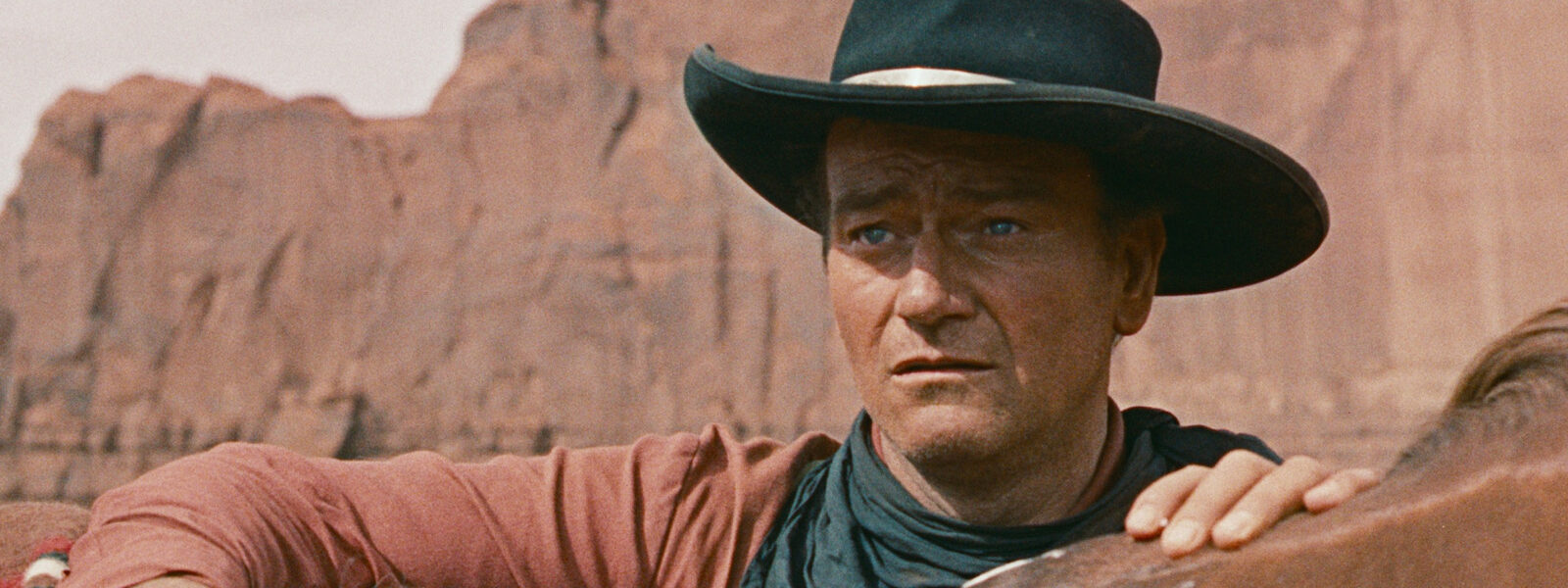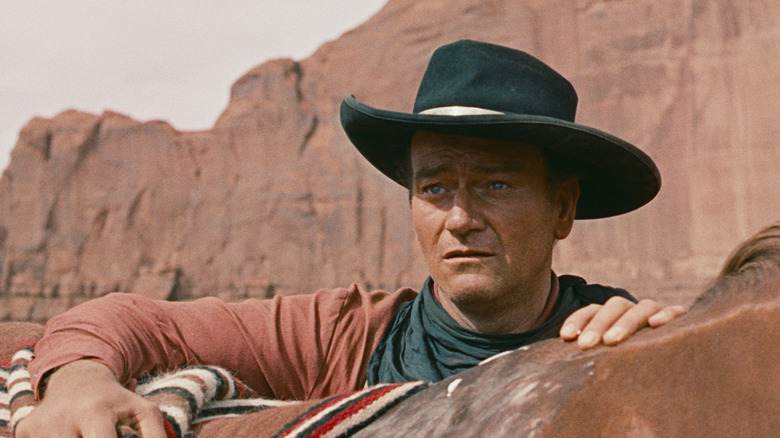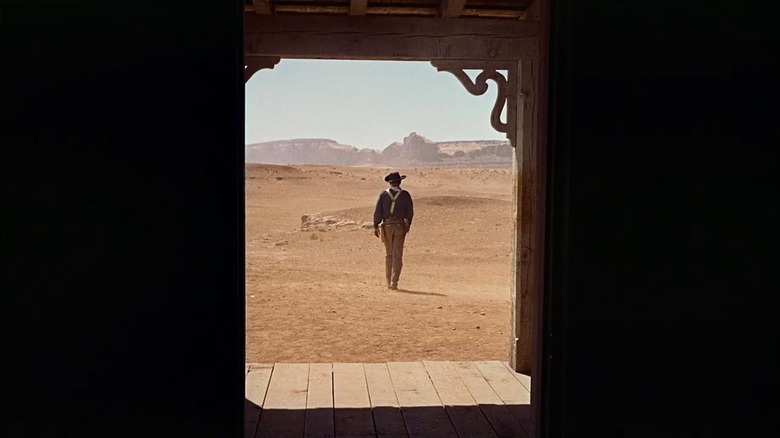When Steven Spielberg grew up in the post-war period, cowboys stories that fight firearms fighting the Amerindians were extremely popular because they represented the way America wanted to be seen at the time, as a bearer of strong and heroic justice. He slipped to see John Ford’s “The Searchers” when he was nine years old (via The Hollywood Reporter). He has become not only one of his favorite films, but also one of his greatest artistic inspirations.
Often considered the Best Western of all time“The Searchers” defined the tropes of the genre we know and all love. John Wayne offers his best performance as ethan Edwards, A veteran of the civil war who does a five-year research for his nieces who were kidnapped by the Comanche after the members of the tribe burned his property and killed his brother, his sister-in-law and their son. “The Searchers” has all the spectacle and the adventurous excitement that we would see later in the series “Indiana Jones” of Spielberg, but its deeper themes of the house and the family resounded the most with him and are anchored in almost all his films. Ethan sees him as a place where he can feel safe and control. Without his family there, Ethan is even more shaken by violence after the recent war.
Although he has operated in completely different genres, this aspiration for stability and the feeling of being left behind appears in Spielberg films like “and”, where Elliot desperately wishes that and could be part of his family instead of returning to space, or “Artificial Intelligence”, where the children’s robot David revives the memory of his happiest day: to be simply with his mother inside their brilliant house. These houses are broken, but the protagonists want to put them together.
Spielberg was not only emotionally linked to “researchers”, but he also taught him a very important lesson in cinema.
Director John Ford taught Steven Spielberg how to paint with a movie camera
Steven Spielberg said AFI That he watches the filmography of John Ford, in particular “The Searchers”, for inspiration before making his own films:
“I am very sensitive to the way he uses his camera to paint his images and the way he supervises things. And the way he organizes and blocks his people, often keeping the static camera while people give you illusion, there is much more kinetic movement occurring when there is none.
Spielberg met John Ford when he was a teenager, whom he tells in his semi-autobiographical “The Fabelmans”. Ford is played by another visionary filmmaker, The late David Lynch, in a poignant and perfect final performance on the screen. The Ford Acianienne and smoking of the chain describes the importance of not simply putting the line of the horizon in the middle of the frame, but rather to push it closer to the top or bottom to generate a more convincing image. We see these pictorial techniques through “the researchers”, especially in the last haunting blow where Ethan is covered in the shadows and framed by a door, looking at the vast plains where he no longer belongs.
John Ford’s most famous western has shown Steven Spielberg how to intentionally make photos with emotional and visual size that uses every corner of the frame. Spielberg learned to be a visually expressive filmmaker by studying his favorite film several times, and now he produced some of the most emblematic images of cinematographic history, especially by looking at the legs of the swimmer in “Jaws”, the T. Rex roar like the banner falls in the “Jurassic Park”, among the other innumerable.







